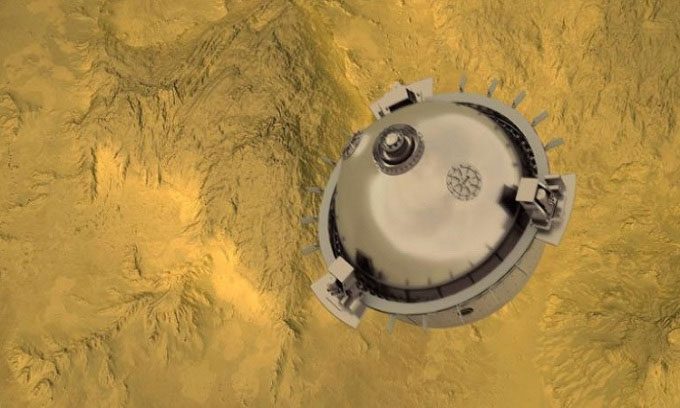NASA is set to launch a mission to fly by Venus and plunge through the harsh atmosphere of the planet in 2029.

The spacecraft will endure scorching temperatures and extreme pressure before landing on the surface of Venus. (Image: NASA)
Named DAVINCI (Deep Atmosphere Venus Investigation of Noble gases, Chemistry and Imaging), this will be the first mission to study Venus both by flying through its atmosphere and landing on its surface. The spacecraft is expected to explore Venus’s layered atmosphere and reach the planet’s surface by June 2031. The DAVINCI mission aims to collect data about Venus that scientists have wanted to measure since the early 1980s.
Essentially, the DAVINCI spacecraft will function as a flying chemistry laboratory, capable of measuring various aspects of Venus’s atmosphere and weather while capturing the first images of the planet’s highland regions during descent. The mission’s instruments will map the surface of Venus and detect the composition of the highland regions. A feature known as “tesserae” may resemble continents on Earth, suggesting that Venus could have tectonic plates, according to NASA scientists.
“All the chemical, environmental data, and images captured during descent will provide a picture of Venus’s layered atmosphere and how it interacts with the surface at the Alpha Regio mountain range, which is twice the size of Texas,” said Jim Garvin, the lead researcher for the DAVINCI project at NASA’s Goddard Space Flight Center in Greenbelt, Maryland. “The measurement results will allow us to assess the atmospheric history and identify special types of rocks on the surface, such as granite, and search for features that reveal erosion or other formative processes.”
The mission will also investigate the possibility of a past ocean on Venus by measuring gases and water content in the deepest parts of the atmosphere. Venus may have been the first habitable planet in the solar system, with oceans and a climate similar to Earth. For some reason, Venus has become a planet with temperatures hot enough to melt lead.
It is possible that Venus once maintained stable temperatures and contained liquid water for billions of years before an event triggered drastic changes on the planet, according to a study from 2019. Today, Venus is almost a dead planet, with a toxic atmosphere 90 times thicker than Earth’s and surface temperatures reaching up to 462 degrees Celsius.
As DAVINCI flies by Venus multiple times, the spacecraft will use two instruments to study the clouds and map the highlands from orbit. Subsequently, DAVINCI will deploy a probe equipped with five instruments to the surface. The landing process will last about an hour, and a heat shield will be used to protect the probe until it is 67 kilometers above the surface. After that, the spacecraft will discard the shield to collect samples and analyze gases in the atmosphere. The probe will also capture hundreds of images after flying through the clouds of Venus at an altitude of 30,500 meters.
According to Stephanie Getty, the deputy lead researcher, the probe will land in the Alpha Regio mountain range but will not need to operate further since all scientific data will have been collected before landing. If the spacecraft survives the descent at a speed of 11 meters per second, it could operate for about 17 to 18 minutes on the surface of Venus under ideal conditions.




















































